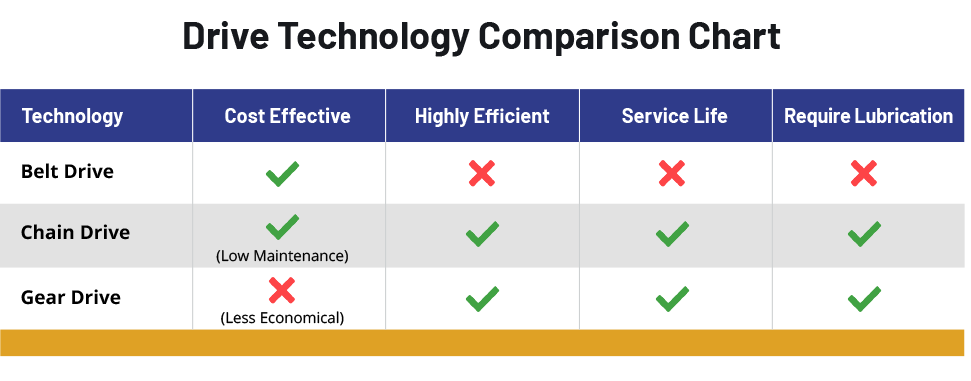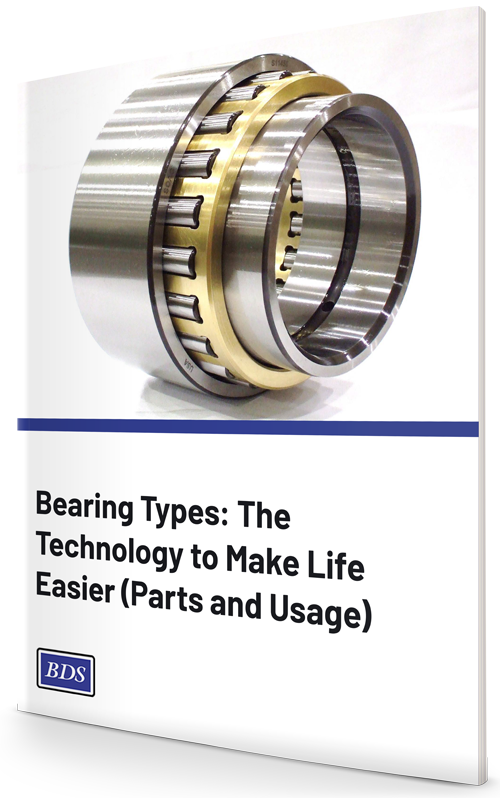Machine elements have unique functions. Some are used to hold the components, some are used for transmitting power, and others are used to support additional components, including bearings, axles, brackets, and more.
Power transmission products transmit power to create motion. The power transmission process transmits a motion from one shaft to another with a connection between them like a belt, chain or gear. Power transmission products are commonly used in industrial automation, construction machinery, and material handling system applications.
Bearing & Drive Systems is committed to being a premier source of bearings and power transmission products to the global distribution market. We offer a growing power transmission product portfolio designed to improve industrial equipment and machinery's reliability and efficiency.
In this article, we discuss types of power transmission methods and devices.
The transmission method is a method that matches the "power machine and the working part of the machine in terms of energy configuration, movement speed and motion form."
Four Power Transmission Methods to Transmit Power to Create Motion
We cover four power transmission methods with an emphasis on mechanical power transmission.
1. Mechanical power transmission
Engineering Product Design cites:
"Mechanical power transmission is the transfer of energy from where it's generated to a place where it is used to perform work using machines, mechanical linkages and mechanical power transmission elements."
The benefits are to transmit power efficiently, change rotational speeds and convert rotational movement into linear reciprocating motion.
The types of mechanical power transmission elements include a wide array of:
-
Belts and pulleys - are used when gears cannot be used and the distance between the shafts is too far apart. Belt pulleys are used to transfer mechanical power. Belts are considered flexible connectors.
- Brakes and clutches - used to engage and disengage the transmitted power.
- Chains and sprockets - used to transmit power when exact speed ratios are needed.
- Gears and gear trains - "A gear train is a mechanical power transmission system where gears are installed on shafts, so the teeth of the mating gears engage and each roll on each other on its pitch circle diameter." (source) Gears are considered rigid connectors.
- Power screws - used as a power transmission linkage element
- Shafts - are used in all types of mechanical equipment design. Components such as couplings, gears, pulleys and more are mounted onto a shaft to transmit power or rotation.
2. Electric Drive
An electric drive refers to electric motors' to drive types of production machinery, vehicles, and others.
It converts electric energy into mechanical energy.
3. Pneumatic transmission
Machine MFG cites...
"The pneumatic transmission uses compressed gas as the working medium, and the fluid transmission of the power by the pressure of the gas."
There are pros and cons to this method. The main advantage is with compressed gas as the working medium, it is easy to obtain and the cost is low.
However,
Due to the air's compressibility, the operating speed is less stable, and the air pressure can be low and need an air supply. (source)
4. Hydraulic transmission
Hydraulic transmission is the transmission of energy and control by using the liquid as the working medium.
"The liquid is generally used for mineral oils. Its function is similar to that of transmission elements such as belts, chain and gear in the mechanical transmission." (source)
Industrial Power Transmission Market
The industrial power transmission market works with basic power transmissions open-drive products like belt drives, chain drives, gear drives, and each has its own set of advantages and disadvantages.
Power Transmission Devices
1. Belt drive technology - transmit motion from one shaft to another with a band that runs over two pulleys.
2. Chain drive technology - transmit power from one component to another through a linked chain and sprockets.
3. Gear drive technology - transmits power over a short distance with a constant velocity ratio.
 Resource:
Resource:
A Look at Belt, Chain and Gear Drive Technology
Conclusion
Energy is essential for driving the machines and equipment for various applications. Different industries use different power transmission products and sometimes a combination of all to suit their individual needs.
There are linear motion devices that transmit power and support motion in a straight line. They include actuators and linear bearings.
Rotary motion devices transmit power between rotating parts in a machine. They include chains, belts, pulleys, sheaves, and gears. And we have bearings that extend the working life of wheels, pulleys, and other rotating parts by reducing friction and enabling parts to move smoothly.
BDS has the largest supply of excess bearing and power transmission inventory. We are here for you if you can't get what you need from your stock, and the manufacturers quote long lead times.
Featured image credit: Gear Sprockets from Pixabay







